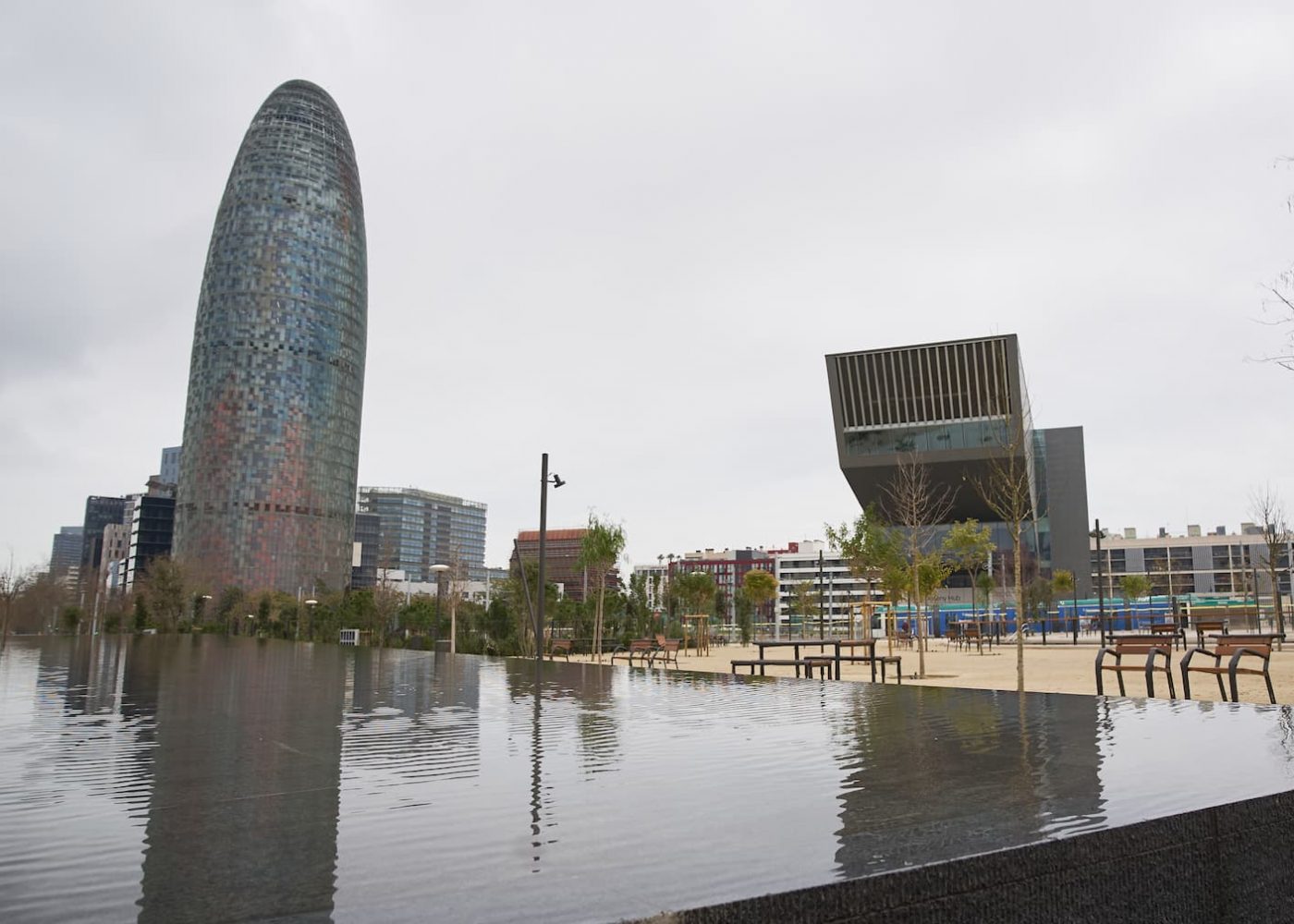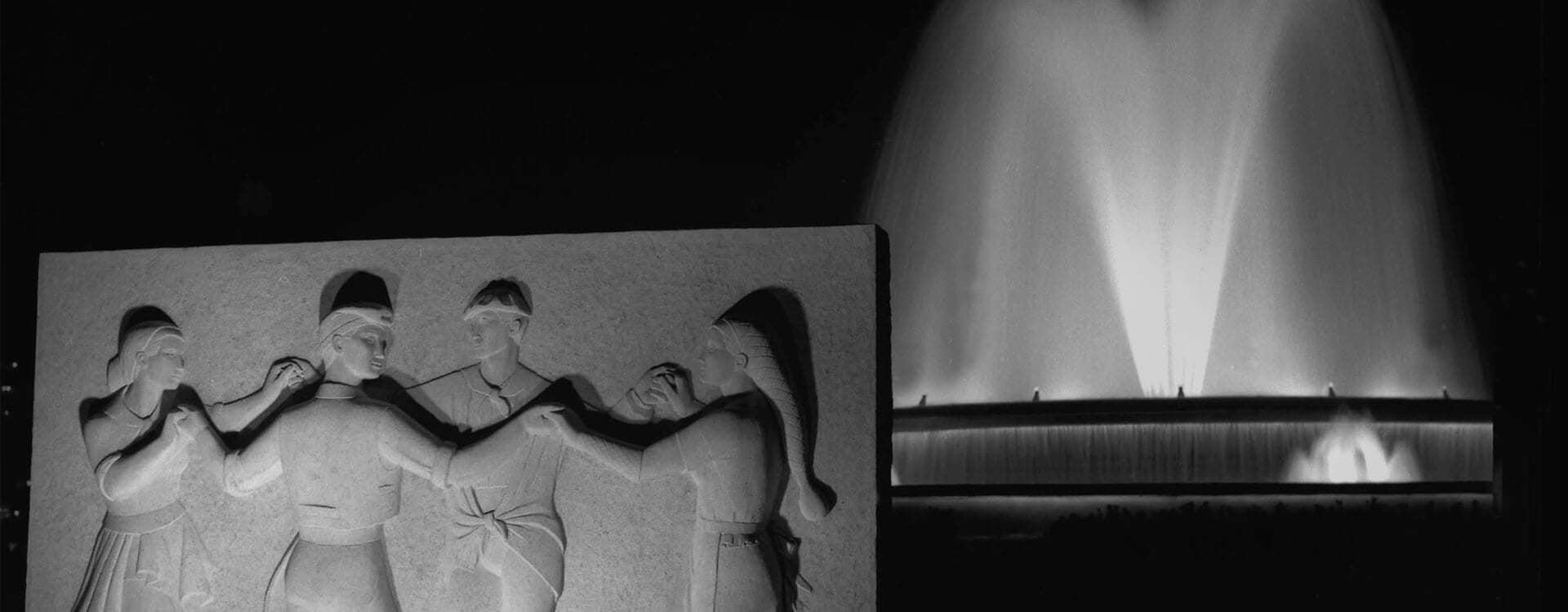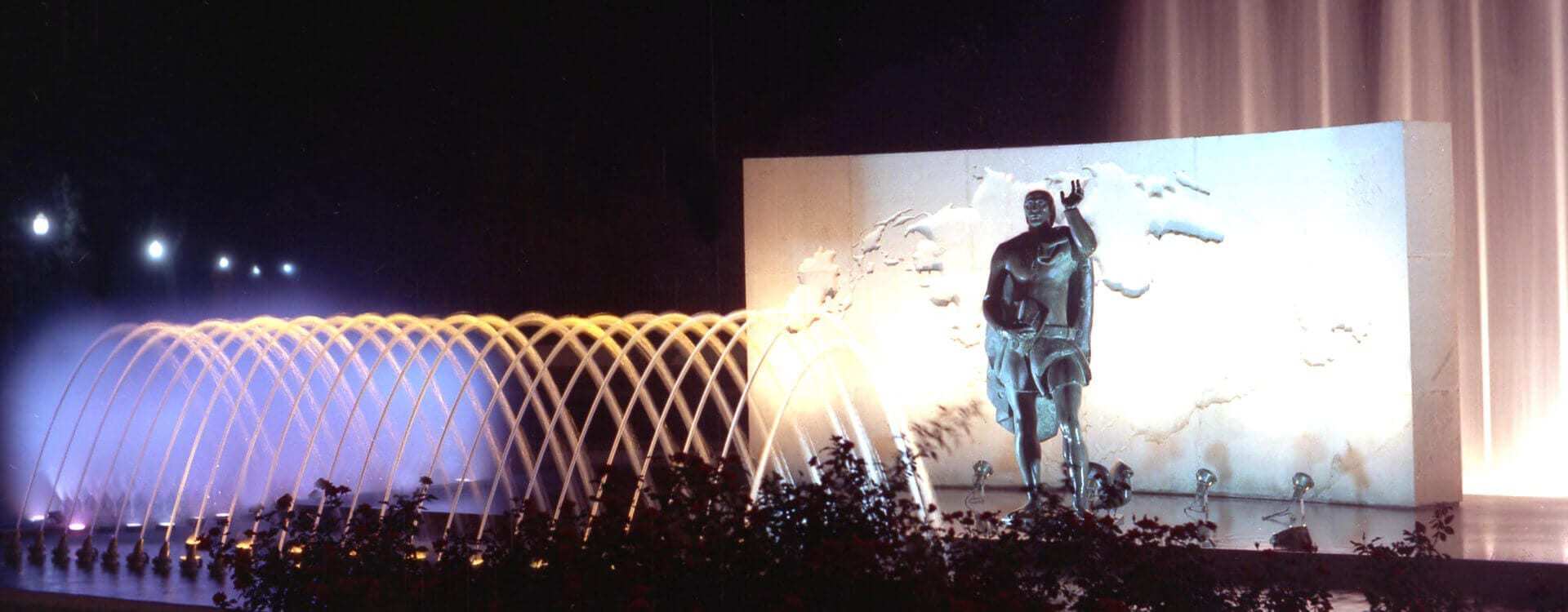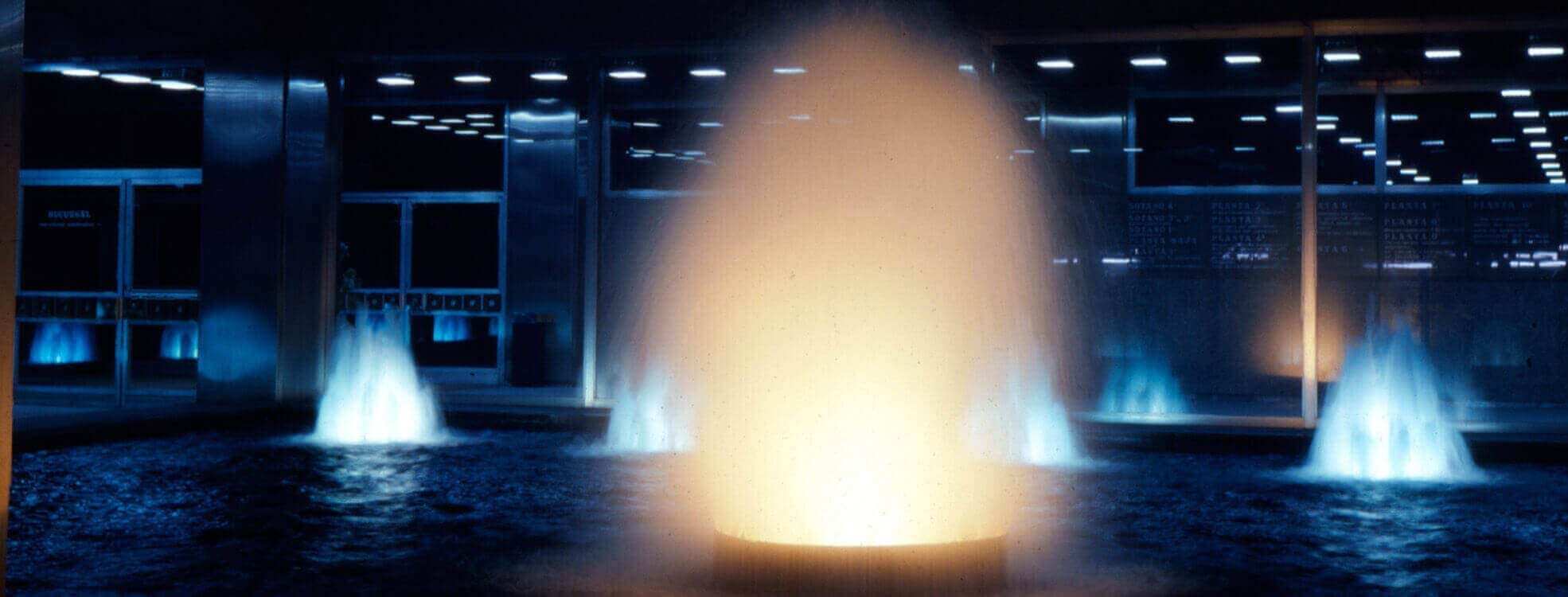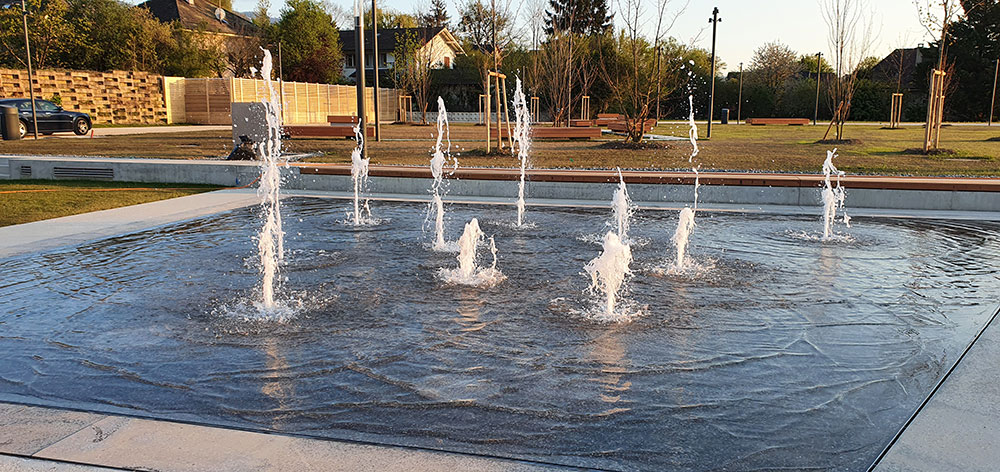Design:
Both mirrors are placed parallel to the passage area of the square and are designed as a single mirror interrupted by another passage area leading to other areas of the park. The two water mirrors are conceived with a dual purpose: to reflect the extensive landscape around them and, on the other hand, to create a constant water flow that generates the sound of a waterfall as the water slides down the irregular walls of the mirrors. After the waterfall, the water from both mirrors is collected and treated to be pumped back into the mirror.
Execution:
The execution of the mirrors consisted of three stages:
Civil works: Civil construction is crucial in the realization of fountains with water mirrors, where uniformity in the surface and perimeter overflow are fundamental to achieve a homogeneous layer in both components. An irregular coating was chosen for the walls of the mirror to visually demarcate the area occupied by the fountain. Regarding the perimeter infrastructure, a grid was designed for the water to flow back to the reservoir, where it will be chemically treated to maintain it in optimal conditions.
Installation: The installation of the systems was carried out simultaneously with the civil construction phase, incorporating the mirror filling system beneath the square pavement. Several outlets were arranged along the mirror to ensure a balanced and rapid filling, which takes less than five minutes. Additionally, the fountain is equipped with vaporizers that help cool the environment during the warm months.
Programming: The final phase of mirror installation involved programming all systems for autonomous operation. This included setting the operating schedules for the mirror and the waterfall, as well as the water treatment system. The standard water level was also established, and control sequences for filling and emptying, along with their respective times, were programmed.
Sustainability:
The system operates on a closed circuit, minimizing the need for additional water inputs, except for losses due to evaporation or wind. An efficient water treatment system, installed in the engine room, is responsible for maintaining it in optimal conditions, reducing the need to frequently empty the reservoir for cleaning. Additionally, it ensures that the water is in perfect sanitary conditions, especially considering its use in the mirrors, where people and children interact. As for the technical equipment, the most suitable and efficient elements available on the market were selected, with flows and pressures adjusted to the real needs of the installation. This allows for a significant reduction in electricity consumption.
Advantages of water mirrors for the square:
The water mirrors located in the Plaza de las Glorias will contribute to the improvement of the environment in the following aspects:
Creation of surprising optical illusions, especially when combined with light and surrounding architecture.
Therapeutic effect: Water mirrors in parks and public spaces can provide a quiet refuge in bustling urban environments.
Mirror function: In addition to their aesthetic and recreational function, water mirrors are often used as natural mirrors, reflecting the surrounding landscape. This can help create a sense of spaciousness in a space, especially in gardens and parks designed for contemplation.
The sound of water falling from the waterfall adds a pleasant auditory dimension to a space.
Natural climate control: In the urban environment, water mirrors can contribute to natural climate control by evaporating water and cooling the surrounding air, especially in warm climates.


